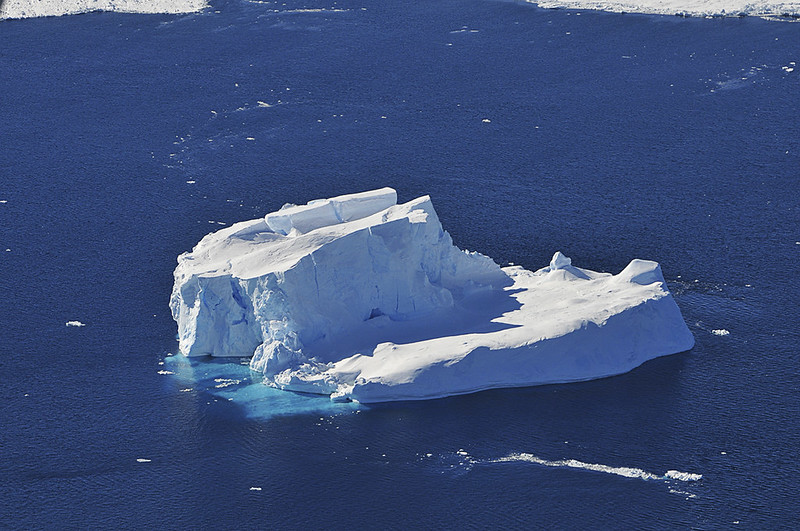
There has been a new annual record set for the least amount of Antarctic sea ice surrounding the continent. This new record surpasses the previous lowest amount by a whopping one million square kilometers.
This achievement is part of a series of records concerning the Antarctic sea ice. Scientists are concerned that global warming might have pushed the region into a new phase where the ice disappears, and this could have significant impacts on the world’s weather and sea levels.
Antarctica sea ice reaches maximum in September
Every year in September, the Antarctic sea ice reaches its largest coverage. In the period from 1981 to 2010, the average maximum extent was 18.71 million square kilometers.
However, the US National Snow and Ice Data Center (NSIDC) has reported that initial analysis indicates sea ice only reached a maximum of 16.96 million square kilometers on September 10th, and it has been decreasing since.
In 2023, the maximum sea ice coverage in Antarctica was 1.75 million square kilometers less than the long-term average, and it fell about one million square kilometers below the previous record low maximum recorded in 1986.
Dr. Will Hobbs, a scientist who studies sea ice at the University of Tasmania, pointed out that, since April, the growth of sea ice in Antarctica had been exceptionally sluggish.
He noted, “This isn’t just a big change from the average, but also from the previous record.” Hobbs further said, “In May, it was pretty obvious we were in for something spectacular.”
Reasons for the reduction in sea ice
Dr. Will Hobbs explained that the reduction in sea ice in the Ross Sea area could likely be attributed to winds that pushed the ice towards the continent, allowing warmer air to affect it. However, weather conditions couldn’t account for the ice loss in other parts of Antarctica.
Antarctic sea ice follows an annual pattern, with its smallest extent occurring in February and its highest levels in September.
Until 2016, sea ice in Antarctica had remained relatively stable. However, since then, we’ve witnessed a series of new record lows, including this past February when the record for the lowest summer minimum was broken.
Scientists are currently working to understand the factors behind this series of record-breaking events, and it appears that a combination of natural variations and the effects of global warming are contributing to these changes.
Dr. Hobbs expressed his perspective that scientists have not definitively crossed a scientific threshold that would enable them to attribute these records solely to global warming. Nevertheless, he noted that the decline in sea ice aligns with predictions made about the impacts of climate change.
Warming of the upper ocean layer
According to the NSIDC, the decrease in Antarctic sea ice observed since 2016 is probably connected to the warming of the upper layer of the ocean. They expressed concern that this might mark the start of a lasting trend of sea ice reduction in Antarctica due to global ocean warming.
There is the possibility that warm water mixing into the polar layer of the Southern Ocean could persist, contributing to this decline.
Last year, it’s likely that thousands of emperor penguin chicks lost their lives due to the unexpected breakup of what is typically stable sea ice at four of their colonies.
Dr. Ariaan Purich, a climate scientist who specializes in Antarctica and the Southern Ocean at Monash University, pointed out that the upper three hundred meters of the Southern Ocean surrounding the continent have been noticeably warmer since 2016.
She said, “But as to why the sea ice has been so much lower than it has ever been on the record, we still don’t have a good grasp on that yet.”
Global consequences of loss of sea ice
Dr. Purich emphasized that the loss of Antarctic sea ice has significant global consequences. Sea ice plays a vital role in shielding land-based ice from entering the ocean, a process that could potentially lead to a significant rise in sea levels.
In addition to its other roles, Antarctic sea ice acts like a mirror, reflecting the sun’s energy back into space. Dr. Purich explained that when there’s less sea ice, more of the ocean is exposed to the sun’s energy, leading to even more warming in the Southern Ocean and, subsequently, more ice loss.
She confirmed a shared concern among scientists, stating, “Scientists are worried. I’m worried that it looks [like] low sea ice is the future—and it’s here now.”
See all the latest news from Greece and the world at Greekreporter.com. Contact our newsroom to report an update or send your story, photos and videos. Follow GR on Google News and subscribe here to our daily email!



